        |
East New York 1885In the spring of 1885, photographer George P. Hall took a series of three shots looking south over East New York from the vicinity of today's Highland Boulevard. These images provide a very rare view of the neighborhood at this time. They are part of the New York Public Library's collection, and were only identified as "a village somewhere in Long Island or Brooklyn." |
|||
| |
Pennsylvania Avenue The first view in the series is the easternmost view. The wide dirt road is Pennsylvania Avenue. Very few if any of these buildings are standing today. The key to these images is the elevated railroad. | ||
| |
Closeup#1 In this closeup, we can see the original steam locomotives of the Brooklyn City Railroad perched on the elevated tracks along Fulton Street. When the El first opened, the line only went to Eastern Parkway. In these shots the construction of the line out to Van Siclen Avenue is underway. That opened in November 1885, giving us very precise dating of these photographs. | ||
| |
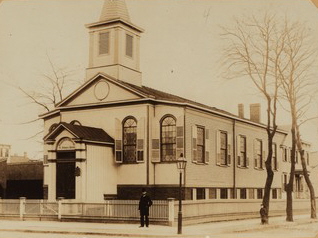
|
Closeup#2 The church steeple on the left belongs to St. John's Lutheran Church(see pic on right). It faced Liberty Avenue on the corner of New Jersey Avenue. We have St. John's page. The building with the smokestack on the right was the New Jersey Mills, see the 1882 letterhead below. | |

|
|||
| |
Closeup#3 The third closeup is to help give a sense of how far a vista these shots provide. Once you get past Liberty Avenue, there is a stretch of farmland. The houses in the distance line the old New Lots Road. We have a New Lots Road page that identifies those houses. Een further in the distance lies Canarsie. | ||
| |
Middle Section Now the camera has been swung slightly east of the first shot. The large church in the center of the image is the East New York Reformed Church, which faced new Jersey Avenue. | ||
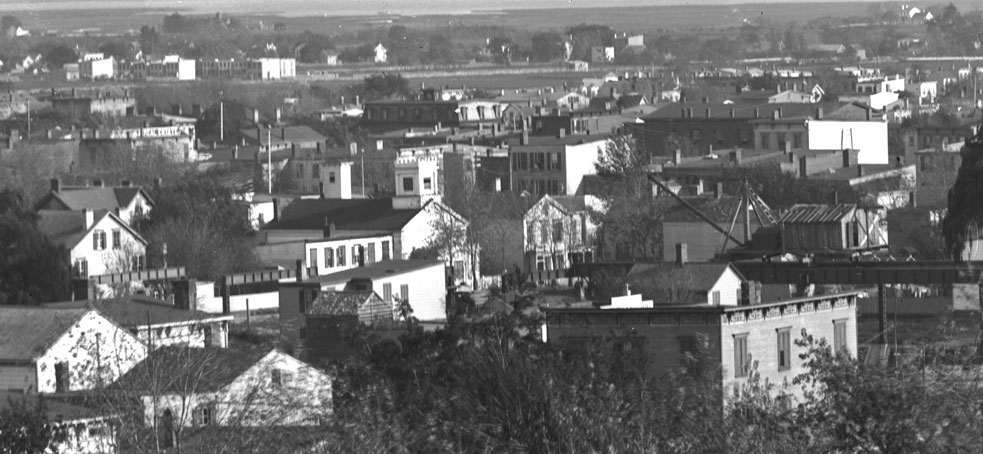
|
Middle Section, Closeup#1 This was the most interesting component of the image for me; we can see a crane atop the elevated tracks, extending the line along Fulton Street. To the left we can see the stanchions awaiting the track. The church in the background with the fortress-like turret was the old ENY Reformed Church which had been moved to Wyona Street and was serving the Trinity Episcopal congregation. They would move to Schenck and Arlington in 1886 and this building served Temple Sinai until they built a new synagogue on Bradford Street. | ||
| |
Middle Section, Closeup#2 I created a small key for this image. We have already identified #1 as the ENY Reformed Church on New Jersey Avenue. #2 is P.S. 61 on the corner of New Jersey Avenue and Fulton Street. Building#3 was Schilleins Hotel on Atlantic Avenue. #4 is the tower of the New Lots Reformed Church on New Lots Road. | ||
| |
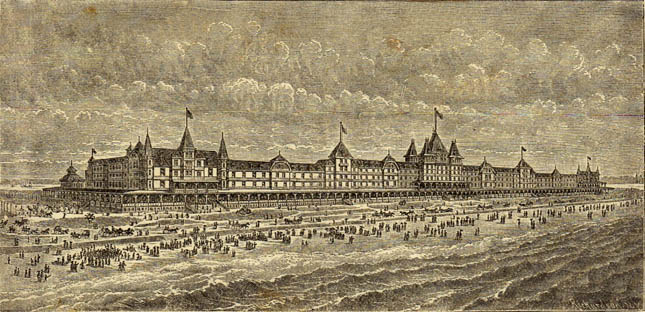
|
Middle Section, Closeup#3 All the way to the left of the image, far out on the horizon, we can see a long, large shadowy image. It is the Imperial Hotel, way out on Rockaway Beach. Hard to believe given its size that it was only around a few years. | |
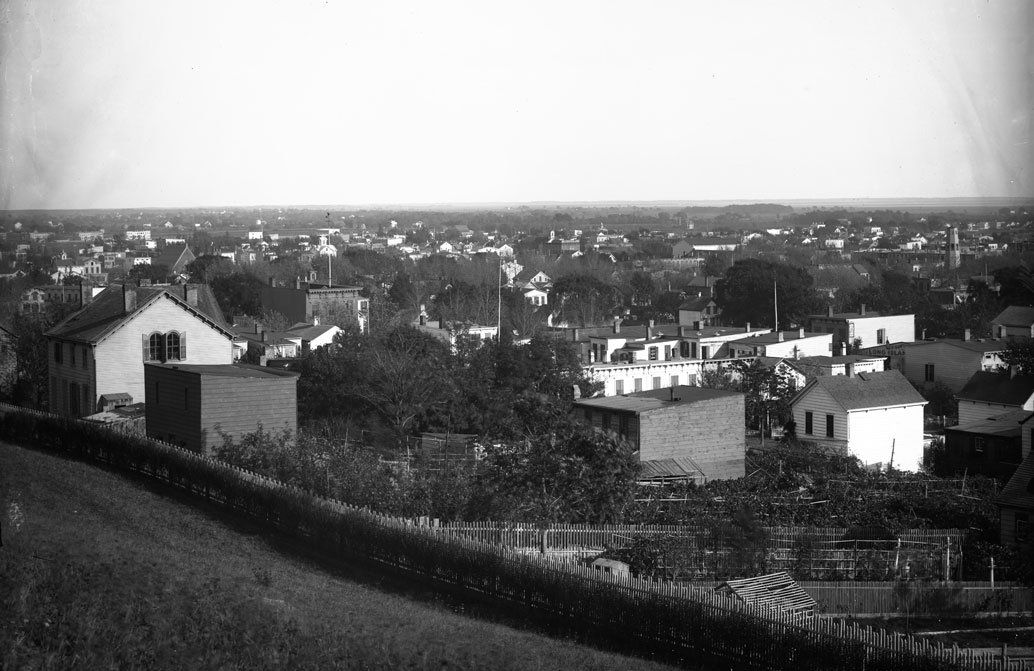
|
ENY 1885, eastern view The final view has the camera turned eastward. | ||
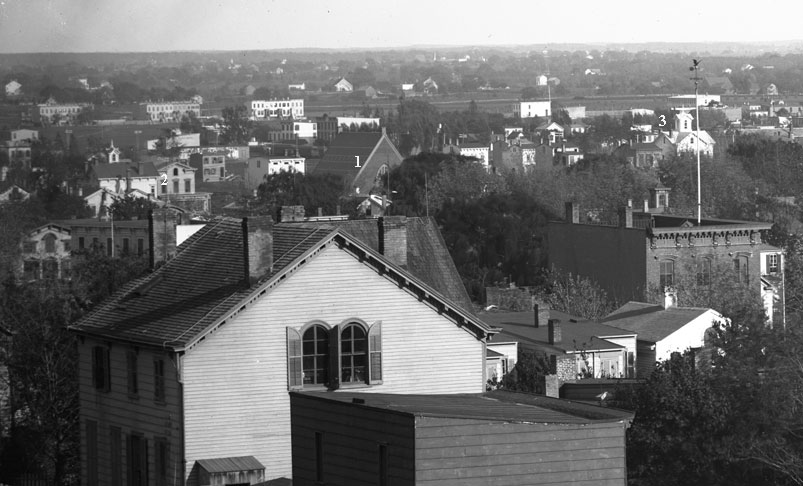
|
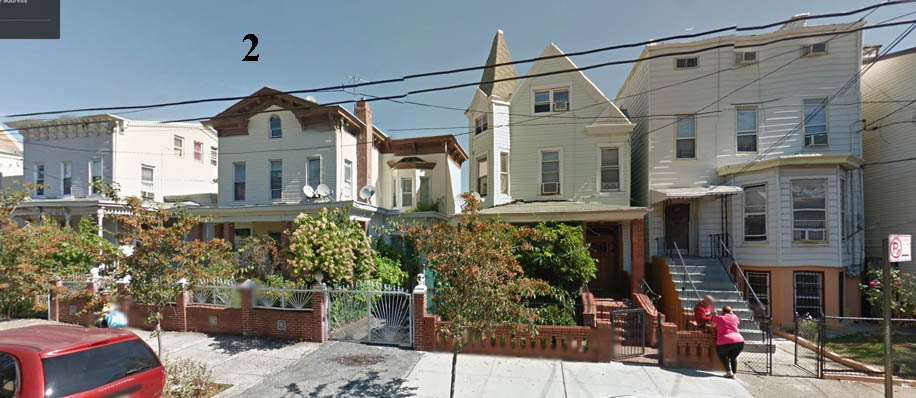
|
Eastern view, Closeup#1 Building#1 is the First Baptist Church of ENY, on Hendrix Street which is still standing today. What's neat is there are several homes in the image still standing. On the right is a shot of Schenck Avenue today, and the house marked#2 corresponds to the house labeled #2 in the 1885 image. The house on its left is in the picture, but mostly blocked out except for the Italianate turret which is gone today. The house on the right was not built yet, but two doors down we can see that building in the 1885 photo. The house labeled#3 is the John Cornell Schenck house, still standing on Barbey Street. | |
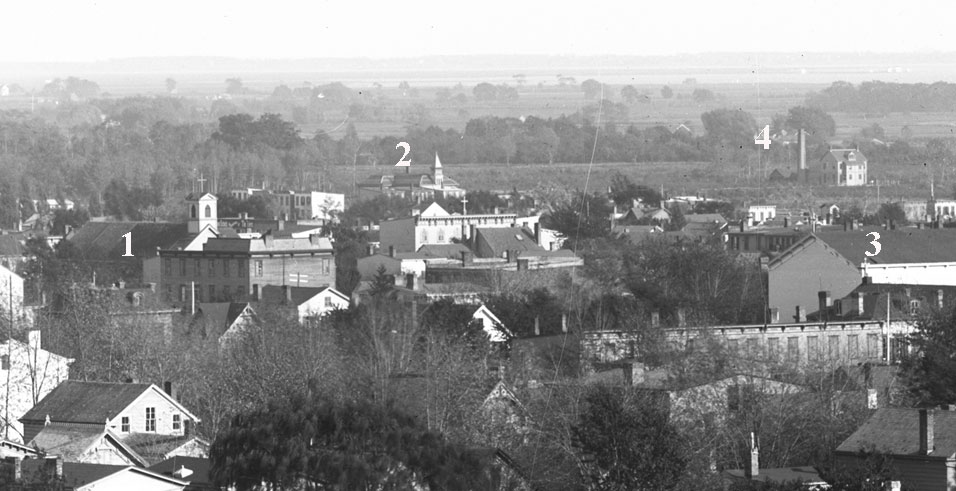
|
Eastern view, Closeup#2 Now we have some churches. #1 is the original St. Michael's. #2 is the original P.S. 64 on Berriman Street, before it was moved to New Lots Avenue to be the first home of St. Gabriel's. #3 is the rear of the original St. Malachy's school building. Marker #4 is by the New Lots Pumping Station. ENY was not part of Brooklyn yet and did not access water from the Highland Park reservoirs. ENY had its own smaller version of the system, described more fully on the Upper Highland Park page. | ||
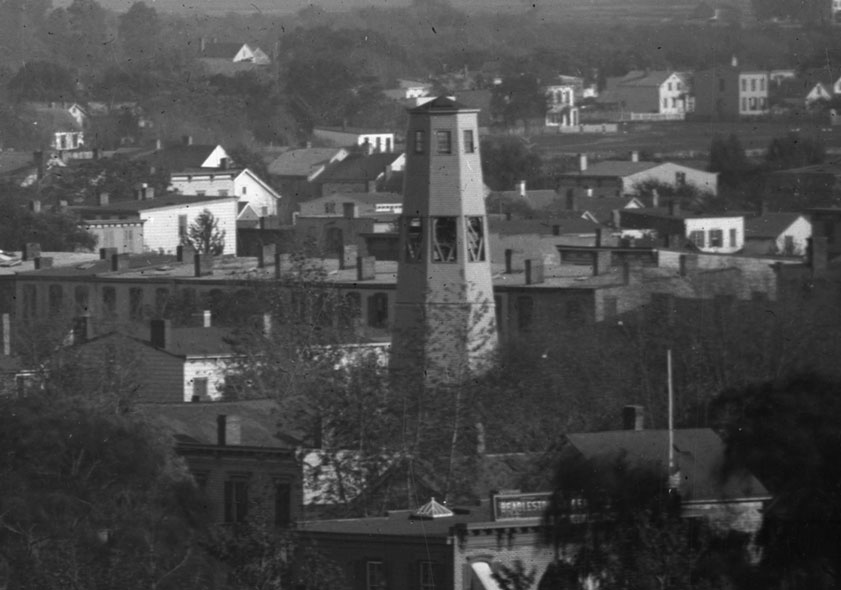
|
Eastern view, Closeup#3 This mystery tower had us stumped. We speculated it was a shot tower for early ammunition, but Harold Moskowitz has presented the most plausible explanation-it is a fire tower. The 360 degree view afforded from the top and the central location all make sense. There were several volunteer fire companies nearby (In 1885 New Lots was still an independent town). I have yet to find any mention of it anywhere in my research, so it remains unconfirmed though I am convinced this is the most likely explanation. | ||